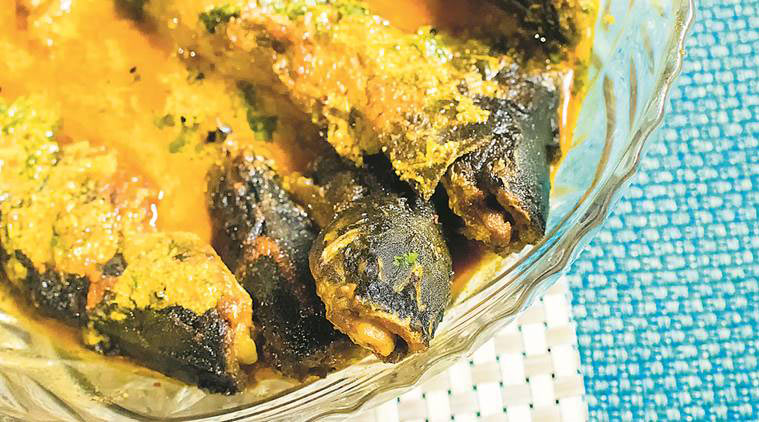
A few weeks ago, after a meal at a Bengali eatery in Delhi, I found myself struggling to find the right word to describe my disappointment with the shorshe-maach (mustard fish). My co-diner, a friend, could not understand what the fuss was all about. After all, the dish was delicious in its own right. To me, however, the mustard fish did not have the right amount of kick — that was the closest expression, I could come up with to describe what the meal lacked.
My friend thought my criticism was unfair. A few more green chilies would have thrown the spice quotient askew, more oil would have made the fish unnecessarily greasy. She was right. The problem lay with me. At times like this, I rue my lack of proficiency in my mother tongue. Try as much as I did, I could not summon the right Bangla expression to convey my sentiment.
I knew this wasn’t just about the palate. The word I was yearning for had to do with the communion between fire, mustard oil (shorsher tel) and the senses. At times, it begins when the oil is poured into a hot wok. The vapours pierce the air, stir up the sinuses and throw the salivary glands into a tizzy, even before the taste buds have had their say. At other times, the raw oil rouses the tear ducts into acting as a flavour-messenger.
Once the murky yellow cooking medium begins to lose colour, it’s time to add one’s preferred masalas — ginger, garlic, poppy seed paste, turmeric, cardamom, chopped onions, or the signature spice mixture of several Bengali dishes, paanch phoron.
Today, mustard oil chases you across a variety of Bengali cuisine. But, writes food historian Chitrita Banerji in Life and Food in Bengal (1991), “In 19th-century Calcutta, many of the great feudal families would die rather than serve food cooked in mustard oil, which was considered only fit for the poor.”
There is, perhaps, something very elemental about the oil. In rural Bengal, or in the homes of plebeian classes, a variety of leaves and stems were cooked in shorsher tel to serve as an accompaniment to rice. Widows proscribed from eating meat or spicing food with onion and garlic would impart zest to their meal by using mustard paste in dantaachachchari, a medley of the stems of leafy vegetables.
Add a dash of the oil to a mixture of mashed potatoes and onions to jhal muri, even dal, and the dish has an effect that is very different from luxuriant cooking media such as ghee: It stings the palette, rather than coat it, and leaves a sharp after taste. This eccentricity apparently worked in shorsher tel’s favour when Bengali middle-class cuisine came into its own to forge what writer Amit Chaudhuri describes as a “delicate combination of the vernacular and the sublime”.
Mustard demands respect. Heat the oil a little more than what is required, chances are that it will turn bitter, grind the seeds a little more, the paste will leave an incongruous taste in your mouth. Nowhere is the deference to balance more in demand than in extracting the oil. Mustard has four varieties: rai, brown sarson, the reddish brown toria and the yellow sarson. Writes food historian KT Achaya in The Illustrated Foods of India (2009), “They are never crushed singly for oil, but always in a judicious admixture so as to yield a mustard oil of distinctive flavour in high yield, to which each seed contributes something distinctive”.
Once assured of deference, mustard oil lavishes sensitivity in equal measure. The carp, catla and perch revel in its zing, its pungency enhances the sweet-salty taste of the hilsa and shorsher tel becomes one with the flavours of a variety of vegetables ranging from pumpkins and flat-beans to the bitter gourd. This is also why it has been the preservative of choice for pickle-makers.
On my next visit to the Bengali eatery, I asked the chef his reasons for playing down the oil’s sharpness. “Only to cater to the tastes of a variety of customers,” he said. I don’t have a verdict on that answer. But, I got the word I had been looking for. The Bengali language describes the kick associated with mustard oil — and some spices — as jhaanj.
This article appeared in print with the headline: Fire in the Belly